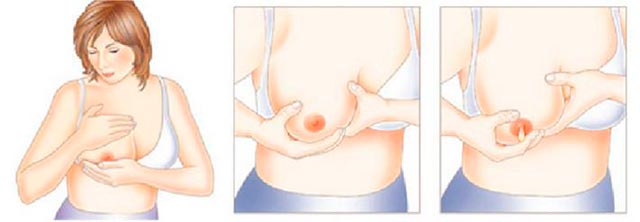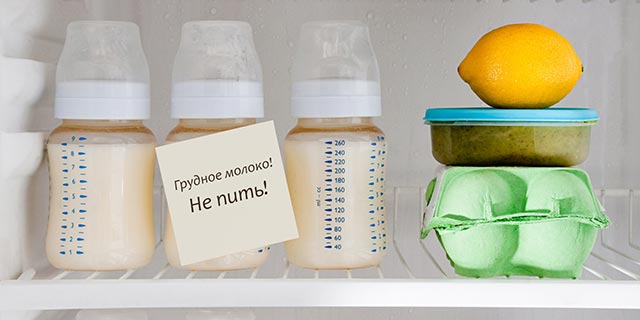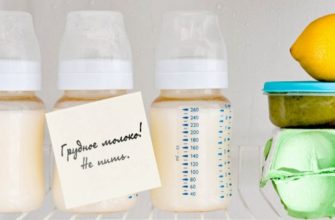Young mothers have a lot of questions about pumping. When to do this, why, how and should it be expressed at all? Should I use a breast pump or is it better to express myself manually? Let's get it together.

Why do you need to express?
With normal lactation and the competent organization of feeding the baby, expressing is not necessary. Moms and grandmothers may strongly advise decanting the remaining milk after each feeding, but these are just remnants of the past. The recommendations of modern pediatricians and GV experts are the opposite: normally the baby sucks as much as he needs, and the same amount of milk is produced for the next feeding. The on-demand feeding regimen, which is now recommended for mothers, suggests that the baby receive its portion of milk.
Still, decantation becomes necessary in some situations:
- when the baby is weak and it is difficult for him to suck out milk from the chest (there is a need to feed the baby with expressed milk from a bottle);
- when lactostasis (milk stagnation) in a nursing mother;
- with insufficient production of breast milk, a crisis of lactation;
- with an excess of breast milk - the baby begins to choke, so it can not suckle;
- if the mother takes drugs that prohibit breastfeeding, but wants to resume lactation after completing treatment;
- when mom needs to go away somewhere or she goes to work;
- if a supply of breast milk is required.
When to express?
- Decantation makes the glands work harder and produce more milk. So do not abuse it.
- If the mother is going to leave somewhere or go to work, it is recommended to start decanting in advance so that the mammary glands are “accustomed” to the new regime and the required volumes. If possible, at the time of separation from the baby, if there is a rush of milk, it is also useful to decant to reduce the risk of milk stagnation.
- With an excess of milk, it is recommended to strain a little before feeding. This will reduce the volume of liquid milk ("front"), so the baby will stop choking and will immediately take the breast.
- If you are concerned about lactostasis, you need to express milk to relieve symptoms - relieve soreness and swelling. Then the mother should put the baby to her breast more often to prevent further stagnation of milk.
- In case of insufficient milk production, it should be expressed strictly after feeding - this stimulates the glands.
- When taking medications, decantation should be carried out in the usual mode of feeding - at times when milk is surging.
- It is convenient to stock up milk when a child skips feeding - for example, sleeps longer than usual (to wake up the baby for feeding?).
- If milk breaks up when parting with the baby, it is useful to express it to reduce the risk of lactostasis.
How to express?
You can use breast pumps, which are manual and electric, or to express the breast manually. Devices perfectly collect “front” milk, but they do not always cope with “back” milk. It is thicker, which makes pumping it harder.
The manual method is much more efficient. Place your thumb and forefinger on the opposite edges of the areola, part them with the skin and slide inside the chest, stimulating the milk channels, not the nipple. With the second hand, you can simultaneously stretch the base of the chest. After a few taps, move your fingers around the areola each time to cover all lobules of the breast. Do not press hard, rub the skin. With the correct procedure, pain should not be felt.

When breast engorgement and hard nipples, when pain occurs during pumping, it is recommended to use the “warm bottle” method. You will need a bottle with a wide neck, which will easily envelop the nipple and areola. Pour boiling water into the container. Then wait a little and attach the neck to the nasal area. Cooling down, the bottle will draw in the nipple, and milk will flow out.
The “warm bottle” method is convenient, but does not completely empty. Therefore, it is better to complete the procedure with conventional manual pumping. The chest is already softened, so there will be no soreness.
We also read:
How to make stocks?

[sc name = ”ads”]
A nursing mother should make sure that she always has at least a modest supply of expressed milk. This will help out with an urgent departure, illness, and in other unforeseen situations, when you have to temporarily part with the crumbs.
At room temperature up to 25 ° C, breast milk is stored for 3 to 6 hours, in the refrigerator for 24 hours, and in the freezer for longer, from 1 to 3 months. Therefore, to create a long-term supply, it should be frozen in special containers or sachets. Before sending for storage, breast milk should be kept for about half an hour in a sealed container so that it retains all its valuable qualities. Each portion of milk must be packaged separately, indicating the date of expression - in this case, you can control its freshness.
We also read: Everything about the proper storage of expressed breast milk
How to store expressed breast milk? Tips for parents - Union of Pediatricians of Russia
Manually expressing breast milk - how to do it right? Tips for parents - Union of Pediatricians of Russia
Do nursing mothers need to express?
Real advice from mommies. Nina Zaichenko
Tips from Maria Bezhko









There were times when it was necessary to express milk, my mother taught me to do this, showed it, then I tried and I succeeded). She kept it in the refrigerator for less than a day, procured not a lot, only two bottles, this business does no harm, but it helps when necessary!
I had hyperlactation when breastfeeding, I suffered greatly from this - my clothes got wet from involuntarily released milk, my chest was constantly swollen, painful. When I began to express correctly, the problem was gone. I chose manual pumping.